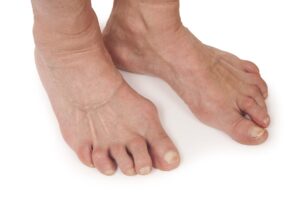
Akey stage in a child’s development is learning to walk. However, all children develop at different rates and with different patterns of moving. Toe walking is commonly seen by Podiatrists and there are many reasons why this may occur. This walking pattern can cause concern with parents when their child doesn’t grow out of this habit. Therefore, in this post we’re going to look at children that walk up on their toes, exploring possible reasons why they are doing this and what can be done about it.
What is toe walking and what causes it?
A child’s walking pattern (gait) is described as toe walking when their heel doesn’t touch the ground while they’re walking. This can occur spontaneously, referred to as ‘idiopathic’ toe walking, in which the toe walking is a habit that develops as the child learns to walk. There are however, a few conditions that may cause the toe walking gait to occur:
- A short Achilles tendon. This tendon links the lower leg muscles to the back of the heel bone. If it’s too short, it can prevent the heel from touching the ground.
- Cerebral palsy. Toe walking can be caused by a disorder of movement, muscle tone or posture caused by injury or abnormal development in the parts of the immature brain that control muscle function.
- Muscular dystrophy. Toe walking sometimes occurs in this genetic disease in which muscle fibers are unusually prone to damage and weaken over time. This diagnosis might be more likely if your child initially walked normally before starting to toe walk.
- Autism. Toe walking has been linked to autism spectrum disorders, which affect a child’s ability to communicate and interact with others.
How can you reduce toe walking?
Your Podiatrist will go through activities with your child which are based around encouraging a heel-strike gait, stretching the tightening muscles, strengthening any secondary weakness and facilitating learning of functional components such as balance or coordination. These activities include taping squeakers to the heel of their shoe to give auditory feedback when the heel hits the ground or recreating different walking patterns such as “crab walks” or “penguin walks” which emphasise heel strike. Exercises include calf and hip stretches, core strengthening and leg strengthening. Your Podiatrist can also provide heel wedges in your child’s shoes to encourage weight bearing through the heels, night splints to passively stretch the calf muscles or serial casting to hold the ankle in a stretch for a prolonged period of time.
When to see a Podiatrist
It is important to remember that all children develop differently and in their own time. Toe-walking can occur for a variety of reasons and often resolves itself. If you notice your child is toe walking on one side of the body or the toe walking is happening past 22 months of age, feel free to bring your child into our clinic and we will conduct a thorough assessment and answer any questions you may have.
Stay safe and have a great day!
Share this post:
Recent Posts

Hip Dysplasia: A Guide for Parents and Adults
Hip dysplasia (developmental dysplasia of the hip – DDH) is a condition that affects the hip joint.

Heel Spurs: Understanding the Cause and Finding Relief
Heel pain can be a real drag, especially when that first step in the morning feels like stepping on a tack. One culprit behind this discomfort can be heel spurs. But what exactly are they, and more importantly, how can you fix them?

Conquering Foot Pain: Effective Strategies for Arthritic Feet
Arthritis in the feet can significantly disrupt your daily life, turning simple walks into painful struggles.


